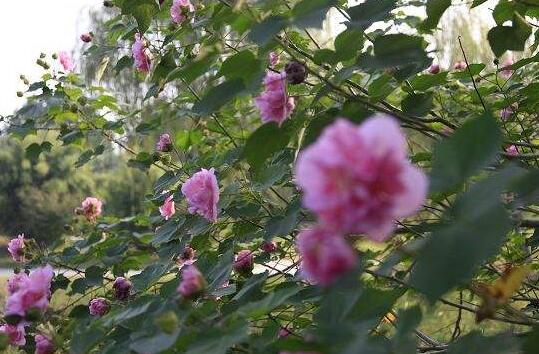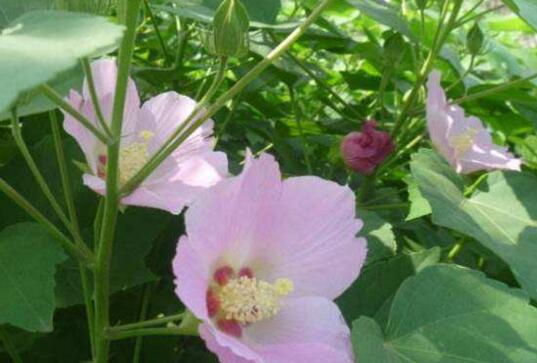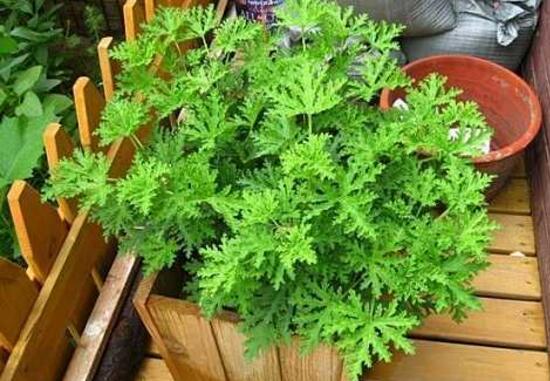How to trim hibiscus, teach you to master pruning time / method / post-flowering management
Pruning is very important when growing many plants, and hibiscus is no exception. Pruning can not only promote the germination of flower branches and new buds, but also maintain the beauty of the plant shape, so every flower friend should learn the correct pruning method, so how to prune hibiscus? Let's share the botanist's pruning methods.
How to trim hibiscus

Hibiscus is a very fast-growing plant, if its stems and leaves are not pruned in time, the height and density will affect the growth of new buds, but how to prune hibiscus is better? We learn in detail from the time, method, post-management and matters needing attention of pruning.
When will the hibiscus be trimmed
Usually, the pruning of hibiscus should be chosen before sprouting and after flower fade, usually from February to March and from October to November. Pruning in these two periods is beneficial to the accumulation of nutrients and the growth of new shoots. After pruning, reasonable maintenance should be carried out according to the breeding method of hibiscus.
2. The pruning method of hibiscus
1. Shaping
Shaping the plants with large tree shape and uneven growth, such as cutting the branches too high and too dense, can improve the light transmittance and ventilation of hibiscus, so that most of the branches and leaves can get sufficient light.
2. Cut off dead branches and weak branches
Cut off some annual withered branches, weak branches, inner bore branches, etc., to avoid the loss of nutrition and make the crown look more neat and beautiful. the cut dead branches should be burned or cleaned up to avoid the infection of germs or pests.
3. Post-flowering pruning of Hibiscus hibiscus
Before overwintering, cut off the residual flowers and dead branches, some pests often appear on the residual flowers and stigmas, if there are still residual flowers on the plant is not treated, may lead to some insect pests, affecting the growth of hibiscus in the following spring.
Management after pruning
When trimming, there will be some wounds, these wounds will often become the base fertilizer for germs to invade, so be sure to manage them after pruning, such as smearing the wound with white ash, etc., and seal the wound to prevent dryness and crack and protect the wound from healing quickly. At the same time, it can also be fertilized to enhance the resistance of hibiscus.
Matters needing attention in pruning hibiscus
The cut must not be close to the intersection of the previous branch, but should retain a length of at least 5 cm from the intersection to avoid the inability of nutrients to be transported to the branches and leaves due to pruning. In addition, the cut should be smooth to avoid multiple repeated wounds.
Introduction to the cultivation methods of Hibiscus hibiscus
Hibiscus, also known as hibiscus flower, is a kind of non-toxic flower plant originating in China. It is the city flower of Chengdu with a white appearance. Its flowering period is as long as ten months and its vitality is extremely tenacious. It is a very popular plant in the flower market at present. However, if you want to raise it, you need to see the following introduction.
I. the growth habits of Hibiscus hibiscus
Hibiscus is sunny and slightly shady, and it also likes a warm and humid climate and is not hardy. When it is planted in the open field to the north of the Yangtze River basin, it often freezes to death in winter. But in the spring of the following year, he will sprout new strips from its roots and blossom normally in the autumn. Hibiscus likes rich, moist and well-drained sandy loam, and it grows faster.
II. Fertilizer and water management of Hibiscus hibiscus
For its fertilizer and water, we can use drilling to fertilize, that is, evenly punching holes near the crown. Fertilizing before he blossoms can be properly applied with urea and proper phosphate fertilizer.
Hibiscus needs a lot of water to satisfy it when it is in the budding period of spring, especially in the dry season in the north, it needs to be irrigated frequently, and it should be watered more in the hot summer in order to keep it moist, and with the decrease of its temperature, we can reduce the moisture properly after autumn. Generally speaking, when the bud begins to penetrate the color, it is necessary to properly control the water. It is necessary to control the growth of its leaves and concentrate its nutrients on its flowers. If the potted hibiscus is used, it is best to choose the burning pot, and the potted soil is required to be loose and fertile, drainage and air permeability are also good, and there should be enough water in the growing season. In winter, it needs to be moved to the leeward to the sunny place to ensure that it can fully dormancy.
Third, the temperature control of hibiscus
Hibiscus flower cold tolerance is poor, winter should be moved into the room, to ensure that the temperature is controlled at 0 ℃ to 10 ℃, let its natural dormancy.
Hibiscus hibiscus
Fourth, the light management of hibiscus.
Hibiscus is cold-averse and likes the sun. In cold areas, it should also be planted in the leeward to the sun, but excessive shade will also slow its growth, and its slender branches will affect the differentiation of its flower buds. You can give it proper shade in the middle of summer, but you need to give it enough care when it is pregnant and blooming in autumn. if the lack of care at this time coupled with the continuous rain will easily cause its flowers and buds to fall.
Fifth, the shaping and pruning of hibiscus
Hibiscus flower is resistant to pruning, and its pruning is carried out after flowering, and it can be trimmed according to the needs. The tree type can be trimmed into either tree shape or shrub shape, but dead branches, weak branches and bore branches should be cut off no matter which kind of tree type, so as to ensure good ventilation and light transmittance inside the crown. Pay attention to warm treatment in winter. And it is best to cultivate its plant shape into a shrub.
VI. Pest control of Hibiscus hibiscus
Common red leaf mite is the most common pest of hibiscus flower, which can be sprayed with 73% propargite 3000 times or 20% dimethyl ether EC 1000 times. The harm of small green leafhopper and cotton leafhopper should not be underestimated, which can be sprayed with 5% carbaryl powder.
Generally speaking, the cultivation of hibiscus is not difficult at all. As long as you master the above points, it is not a dream to blossom smoothly for ten months. It should be noted that if the wind is strong during the flowering period, the hibiscus planted outdoors should be moved indoors to avoid the attack of wind and torrential rain and affect the ornamental value.
Can the leaves of hibiscus flowers reproduce? the breeding methods of indoor hibiscus flowers
Hibiscus, native to China, is a national flower that has existed for more than 3000 years. It likes warmth, is not cold-resistant, and has low requirements for soil. Many flower friends like to raise it. However, a pot of hibiscus is not a bit monotonous, how to change one pot into ten pots? This requires us to master the breeding methods of hibiscus flowers. It is understood that hibiscus flowers can be propagated by sowing, cutting and dividing plants. Let's go and have a look.
How to propagate hibiscus indoors, cuttage / sowing / ramet
Hibiscus flower, a kind of plant with great appreciation effect, is deeply loved by flower friends because of its large flowers and bright and beautiful flowers. Although hibiscus does not have high requirements for soil, barren land can also grow, and it is very simple to manage, but its reproduction is still a little bit, so how to reproduce indoor hibiscus? To put it simply, there are three methods: cutting, sowing and ramet.
2. Propagation methods of hibiscus flower
1. Cutting methods and matters needing attention of hibiscus flower.
You can choose twig cuttings or semi-hardwood cuttings, cut into branches with 3-5 nodes and 10-15 cm long, and retain the upper 3-5 leaves or half leaves. Insert 1 stroke 2 length of the treated cuttings into a flowerpot with vermiculite, then spray to keep the soil moist. It is necessary to give proper shade to promote germination and take root. After 2-3 new leaves grow, dilute liquid fertilizer can be applied to remove weeds. Finally, transplanting and planting in place, take normal fertilizer and water management on it.
Matters needing attention
The cutting time of ① hibiscus flower is the best in winter and spring after flowering, and the specific time is from February to March.
If ② chooses the branch of cuttings to have a bud, it is necessary to cut off the bud and remove the leaves at 1 and 2 places below the branch to reduce water evaporation.
③ soaked the bottom of the cuttings in potassium permanganate solution with a concentration of 3 4g / L for 15 minutes before cutting for 30 minutes.
2. Sowing method
Among the propagation methods of hibiscus flower, sowing method is the most common. Fully mature hibiscus flower seeds can be collected after autumn (with high survival rate) and stored in a cool and ventilated place for sowing in the following spring. Because the seeds of hibiscus flowers are small, they can be mixed with fine sand and sown. The sowing method of hibiscus sunflower is as follows:
First put the seeds in cold water for 3-4 days, and change the water once a day during seed soaking to ensure the germination rate of hibiscus. Wait for the seed to break the skin to send out the seed bud, put the temperature at about 32 degrees to accelerate the germination. When the hibiscus sunflower sprouts, it is necessary to sow the planting with the seed buds on the seedling bed. The nursery bed for planting hibiscus sunflower must be fully fertilized.
3. Split-plant method
The plant division method is also a more practical propagation method of hibiscus flower, which is suitable to be carried out before sprouting in early spring, and the mother plant with strong tillering can be divided and planted separately. In the ramet, it is necessary to cut off the root of the stem bud on the old plant, so that it is easy to survive, and it can blossom if it is planted well in that year. However, in the ramet, we must choose the healthy and full branches of the same year for ramet.
Summary: the breeding methods of hibiscus flowers are the above three, but flower friends should pay attention to the fine soil used in the seedbed, cover the soil, sprinkle water and keep the seedbed moist after sowing. Generally speaking, seedlings can emerge after 25 or 30 days and can not be transplanted until the following spring. Of course, flower friends also need to pay attention to hibiscus diseases and insect pests, especially in the high temperature season, drought, poor ventilation is the most likely to occur, so we also need timely spray control.
Third, matters needing attention of hibiscus flowers
1. Good ventilation
Hibiscus is a deep-rooted plant, the root is stout and slightly fleshy, like a warm, humid, sunny environment, but also drought-tolerant, slightly shade-tolerant. Its nature is extensive, the requirement of soil quality is not strict, and it grows best in loose, permeable and well drained sandy loam soil. Its cultivation should choose the place with good ventilation and fertile soil, especially adjacent to water.
2. Watering and fertilization
The daily management of hibiscus is relatively extensive, watering should be paid attention to in drought, more fertilizer and water should be applied in spring sprouting period, and a small amount of phosphorus and potassium fertilizer should be applied before and after flowering. Ditches can be made around the plant every winter or spring and some mature organic fertilizer can be applied to make the plant grow exuberantly and bloom luxuriantly. When the flower bud is transparent, it should be properly watered to control its leaf growth and concentrate nutrients on the flower.
3. Pruning
Hibiscus has strong growth, strong sprouting ability, many and chaotic branches, so it should be pruned and sprouted in time. Hibiscus is resistant to pruning. It can be trimmed into trees or shrubs as needed. Pruning should be carried out after flowering and before sprouting in spring, and the withered branches, weak branches and inner branches should be cut off to ensure good ventilation and light transmission inside the crown. The shoots of plants planted in cold areas will freeze to death in winter, but more new shoots can sprout in the following spring. Therefore, it is best to cultivate its plant shape into a shrub.
4. Growth conditions
Hibiscus potted plants should choose larger porcelain pots or plain roasted pots, which require loose and fertile soil, good drainage and air permeability, and sufficient moisture in the growing season. Winter moves to indoor temperatures ranging from 0 ℃ to 5 ℃ to ensure full dormancy to facilitate flowering in the coming year.
In China, hibiscus flowers have a history of more than 3000 years. How to raise and reproduce hibiscus flowers has been a very effective method for many years. So after reading this article, you can try to breed hibiscus flowers by yourself. I believe it is also a good experience for you. The above is about whether the leaves of hibiscus flowers can reproduce and the breeding methods of indoor hibiscus flowers. I hope I can provide help to all flower friends.
- Prev

How does hibiscus apply fertilizer? four fertilization techniques make stems and leaves strong and flower branches germinate.
The flowers and buds of Hibiscus hibiscus are closely related to fertilization. when fertilization is reasonable, the stems and leaves will become strong and the flowers will become bright; but when fertilization is not appropriate, not only the leaves will be yellow, but also the buds will be less, so how to fertilize hibiscus? The editor came to tell you the answer.
- Next

How to raise mosquito repellent grass, breeding methods and matters needing attention / high temperature and good effect
In summer, people are always bitten by mosquitoes, often covered with bags. At this time, some people buy mosquito repellent, and some people raise mosquito repellent plants, and mosquito repellent is the most common, it can be bought in the florist, then how to raise mosquito repellent? In this regard, the editor carefully arranged the breeding methods and matters needing attention of mosquito repellent grass.
Related
- Fuxing push coffee new agricultural production and marketing class: lack of small-scale processing plants
- Jujube rice field leisure farm deep ploughing Yilan for five years to create a space for organic food and play
- Nongyu Farm-A trial of organic papaya for brave women with advanced technology
- Four points for attention in the prevention and control of diseases and insect pests of edible fungi
- How to add nutrient solution to Edible Fungi
- Is there any good way to control edible fungus mites?
- Open Inoculation Technology of Edible Fungi
- Is there any clever way to use fertilizer for edible fungus in winter?
- What agents are used to kill the pathogens of edible fungi in the mushroom shed?
- Rapid drying of Edible Fungi

